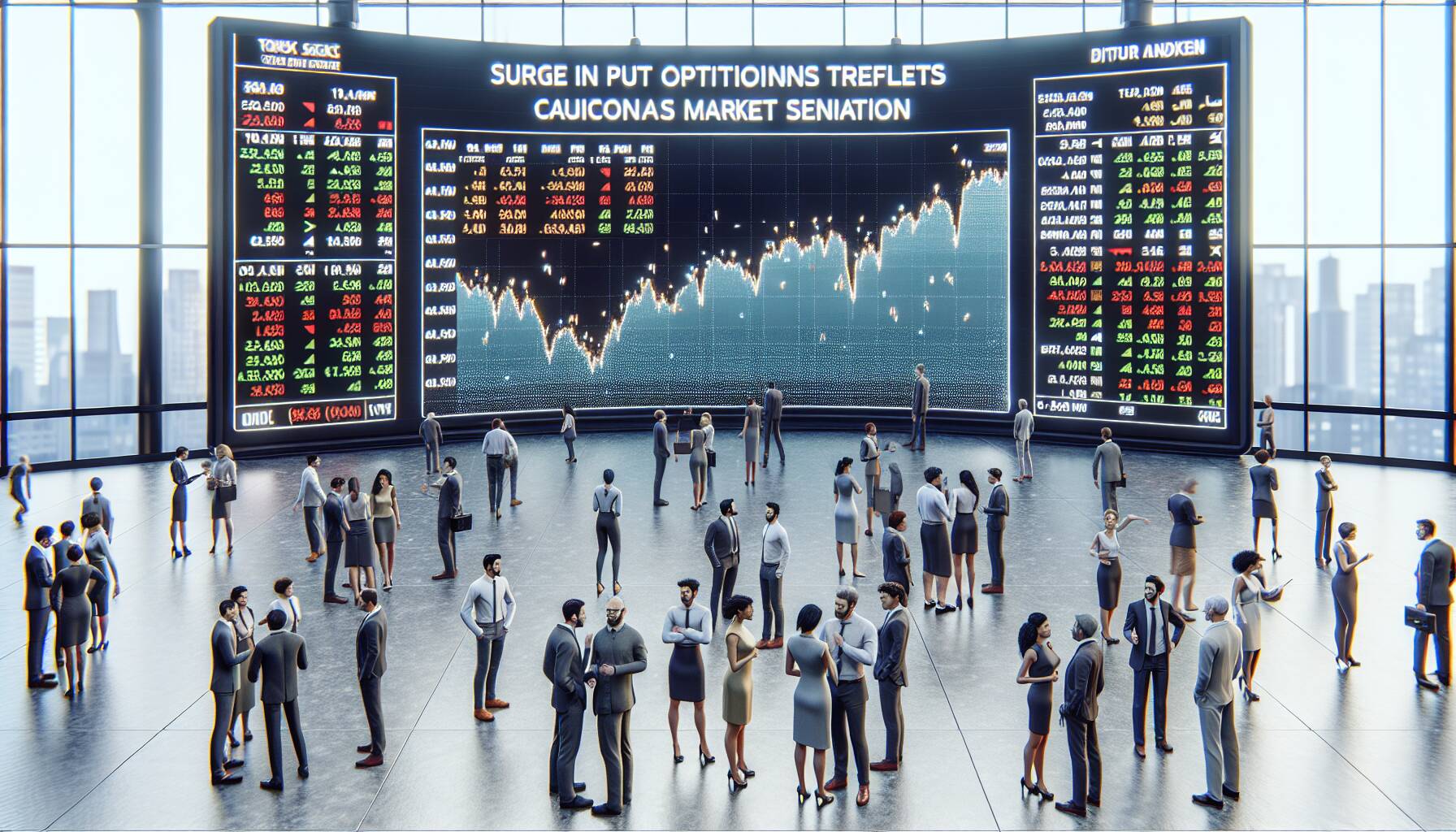The cryptocurrency market has recently witnessed a notable shift in trading patterns, with put options taking center stage. Over the past week, these financial instruments, which provide investors the right to sell assets at predetermined prices, have seen a surge in activity. This trend reflects a growing sentiment among traders, as they hedge against potential declines in cryptocurrency values.
In the tumultuous landscape of cryptocurrencies, put options serve as a form of insurance for investors, allowing them to protect their portfolios during uncertain market conditions. The rise in put option trading hints at cautious strategies among participants, indicating a belief that market volatility might persist. Such trading behavior often signals an underlying anxiety about future price movements, particularly in an industry renowned for its highs and lows.
“The increased activity in put options highlights how traders are preparing for potential downturns, showcasing the dynamic strategies used in crypto trading,” analysts indicate.
Moreover, this uptick in put options trading comes amid broader market fluctuations, as investors navigate regulatory developments and economic factors influencing cryptocurrency prices. As traders engage in this protective maneuvering, the implications for future market dynamics remain a topic of keen interest among industry observers.

Put Options Trading Activity
Recent trends in put options trading have shown significant dominance. Here are the key points related to this development:
- Increased Volume: There has been a notable increase in the volume of put options traded, indicating heightened market sentiment.
- Market Sentiment: The surge in trading activity reflects bearish sentiment among investors, possibly indicating concerns about future market performance.
- Hedging Strategies: Investors may be using put options as a hedging strategy against potential declines in asset prices.
- Volatility Trends: With rising put options, implied volatility may also increase, impacting option pricing and investment strategies.
- Risk Management: Active engagement in put options can serve as a tool for managing portfolio risk, providing a safety net for investors.
The rise in put options may influence individual investment strategies, impacting decisions related to risk exposure and asset allocation.
Put Options Surge: Analyzing Market Trends and Impacts
In a striking shift in trading dynamics, put options have captured the spotlight over the past week, reflecting a heightened interest in hedging against market volatility. This surge can be compared to recent reports showcasing similar trends in other assets, such as equities and commodities, where investors have flocked to protective strategies amid uncertain market conditions. The competitive edge of put options lies in their ability to offer a safety net, allowing traders to profit from declines or limit losses in their portfolios.
However, this dominance in trading activity does come with its drawbacks. A heavy reliance on put options could signal panic or a bearish outlook among traders, which may contribute to increased volatility. In contrast, bullish investors might see this trend as a disadvantage, as the market sentiment could dampen prices of underlying assets. Furthermore, the liquidity in put options could be a double-edged sword; while more trades indicate greater participation, a sudden increase in demand could lead to inflated premiums, making hedging more expensive than necessary.
This trend primarily benefits risk-averse investors or those with significant exposure to high-volatility assets. Institutions and seasoned traders can leverage this to maximize profit potential while minimizing losses, turning a precarious market environment into a strategic opportunity. On the flip side, inexperienced traders or those focused exclusively on upward trends could find themselves at a disadvantage, potentially missing critical market signals or incurring higher costs due to increased demand for protection through put options.

















